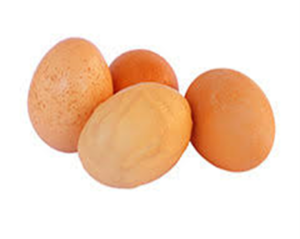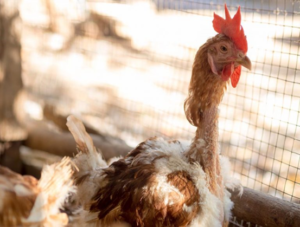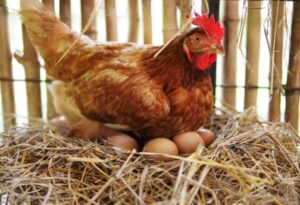Layer farming means raising egg-laying birds for the purpose of commercial egg production. Due to their high nutritional value, the demand for eggs has continued to grow worldwide. Eggs are easy and quick to prepare and can be used in a wide range of recipes both on household and commercial levels. This has seen layer farming grow quickly in the livestock sector.
In Zambia, the most commonly used layer in commercial egg production is the Lohmann Brown. Egg production begins when the birds reach about 18 to 22 weeks of age. Flock production rises sharply and reaches a peak of 84 to 90% at about 30 weeks of age. Production then gradually declines to about 65% after 12 months of lay at 72 weeks of age.
Eggs are the main source of revenue for the layer farmer, hence the farmer will need to sell lots of these in order to realise profits from his venture. The profitability of a layer farm is determined by the difference between the revenue received from the egg sales and the costs incurred by the farmer to keep the enterprise going.
If a farmer is able to meet his production costs and earn some profit through egg sales, then the enterprise is considered as profitable. However, as the birds age and production continues to reduce, the farmer may find himself unable to meet his production costs. This usually happens when production has dropped to under 50%. At this point, the farmer starts to incur a loss and needs to cull the birds.
How can a layer farmer ensure a profitable business?
This can be achieved if the farmer can keep his egg production high for as long as possible. For this to be possible, we need to understand why birds stop laying too soon and what can be done to prevent it. This will help us keep a reasonable production going over a longer period.
Reasons why layers may stop laying
Improper nutrition
Hens need a balanced and adequate diet to maintain egg production. Each egg contains significant amounts of protein and energy, which must first be consumed by the hen as part of its daily food intake. Too little dietary energy or an imbalance of amino acids can cause reduced egg production.
Hens also need sufficient amounts of calcium in their diet to produce eggs. The shell of each egg contains roughly two grammes of calcium. If we do not provide adequate calcium in the diet, the bird uses up its calcium reserves from the skeleton, which quickly depletes and the bird ceases to lay eggs.
To maintain egg production, flock owners should feed only a prepared layer ration balanced to meet all of the hen’s nutritional requirements.
Tiger Animal Feeds produces three separate rations for laying birds, providing them with the needed nutrients to keep up production until the time of culling. The ration will keep the flock at the right and uniform weight in order to reach a high peak and have persistence of production. These feeds are given in the table below.

Table 1: Tiger Animal Feeds Layer Feeds
Look out for Making money with layers by keeping your production up, part 2, in the next issue.
Tiger Animal Feeds ensures that farmers are able to access technical assistance from our Technical Team which is always available and reliable.
For more information, contact Barbara Mulonda Simbaya, at barbara.mulonda@tigerfeeds.com.zm or (+260)969-202-207.












